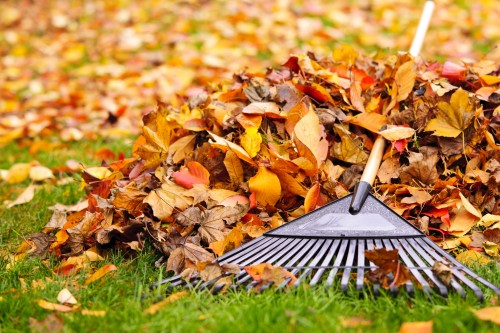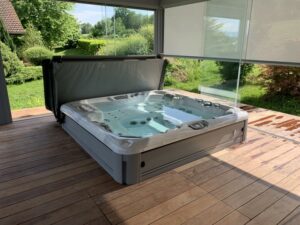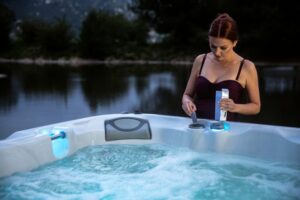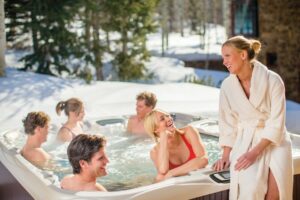You know how the saying goes, “all good things come to an end”. And unfortunately, that is true for the warm and sunny summer months that we all love so dearly.
As summer comes to an end, along with the backyard barbecues and pool parties, and the colder seasons of fall and winter approach, it’s time to prepare your backyard.
As things go into hibernation for the winter, it’s best to batten down the hatches, and prep things for the long haul.
There are a ton of different ways you can prepare your backyard for the fall and winter. We like to think about organizing our backyard chores into three main categories:
- Clean up around the exterior of the house
- Prep your outdoor living spaces for the winter
- Finish landscaping and lawn maintenance
Keep on reading for ideas on how to best prepare your backyard for the wall and winter, and guarantee that it is ready to go for when the snow melts, the plants begin budding and the birds start singing songs of springtime temperatures.
Clean Around The Exterior Of The House
1. Clean Out The Gutters
Before the winter, it’s best to completely clean out the gutters around your home. The reason is that clogged gutters can keep water and ice from melting, and result in frozen gutters. Froze gutters can lead to a whole host of other, most costly problems and repairs.
2. Collect The Dead Leaves
Fall is beautiful, but it sure does make a mess. If you have trees whose leaves fall and cover your lawn, we recommend collecting and composting all the dead leaves, twigs and needles.
It may sound like a lot of work, but it’s totally worth it. Dead leaves that are left out on the lawn, and that are covered with snowfall, trap moisture and make it difficult for the snow to melt, and for the lawn to dry out periodically.
Lawns that cannot dry out throughout the winter end up with unattractive and yellow patches of snow blight.
3. Wash And Inspect Windows
The spring and winter months are characteristically dirtier and dustier than the colder months of the year. That is why we like to wash all the windows before the coldest temperatures arrive for the winter.
Washed windows look nicer, and let’s be honest, no one is out in the snow, spraying and scrubbing windows.
And while you are washing, we recommend inspecting the windows as well. You can repair and replace faulty windows, if necessary, in order to avoid drafts of freezing cold air during the winter.
4. Turn Off Outside Spigots
Turning off your outdoor spigots is a smart thing to do in order to avoid frozen pipes. Normally, there is a way to turn off the exterior water source from a master valve inside the home. If that is not possible for you, you maybe consider insulting your spigots for the winter.
5. Plan For Snow Removal
If you live in a location that experiences snow, then you appreciate the importance of a good snow removal plan. Especially a plan that is hatched before the snowy season, and not at the last minute during the first blizzard of the year.
The fall is a good time to inspect all your snow removal tools like your shovels, snowblowers, and ice melt broadcaster. It’s also a good time to bulk up on ice melt.
And if you need to, hire a snow removal professional before they take on too many contracts for the winter.
Prep Outdoor Living Spaces
1. Inspect Outdoor Lighting
You can stay ahead of busted bulbs and faulty lighting by inspecting your lighting system prior at least once a year. We like to do this in preparation for the fall and winter.
Replacing bulbs before the first big snowfall makes the job a lot easier. You just do not want to be up on a ladder or step stool, while it’s dumping snow.
2. Drain Outdoor Water Features
If you live in a location that experiences freezing temperatures during the fall and winter, it’s crucial to drain all outdoor water features. This includes:
- Pools
- Water fountains
- Waterfalls
- Jacuzzi
The reason is that if water is allowed to remain in the features, it can freeze within the water lines, and cause massive damage.
3. Cover Outdoor Furniture
Most outdoor furniture is designed with bad weather in mind. Outdoor furniture can normally withstand extreme sun and heat, water, dirt, and grime.
However, in order to increase the longevity of your furniture, it’s best to clean and cover it for the winter. You can protect the fabric from wear and tear, and metal components from moisture and rust.
In a perfect world, you can move your furniture into a shed during the winter. But if you don’t have that luxury, just go ahead and cover the furniture and stow the patio umbrella. And don’t forget the fireplace and BBQ!
4. Clean And/Or Winterize The Hot Tub
If you plan to use your hot tub throughout the winter, which we hope you do, then we recommend that you go about your normal hot tub maintenance in order to prepare it for the winter. It’s much easier to do with warmer, more comfortable outdoor temperatures.
However, if you think you will shut off your hot tub for an extended amount of time, then you should winterize it.
- Let the chemicals dissipate: give it a few days, and test the water to make sure the chlorine level has dropped to zero. Hot tub chemicals can be harmful to plants and wildlife.
- Turn off the breaker: it’s not enough to just turn off the hot tub. Cut all power by turning off the breaker.
- Drain the hot tub: remove the drain cap, and attach the garden hose. Pick a good location for all the water to drain without flooding
- Drain the blower: if your hot tub has an air blower then you must drain all the water before continuing to winterize your hot tub
- Loosen the union on the pumps and heater: if the pumps have a drain plug, remove this also
- Remove and clean filters: use a filter cleaner and let them soak for 24 hours
- Blow out the lines: use a shop vac to blow out every union, drain, jet, and water line
- Remover the remaining water: a shop-vac is the ideal tool for this
- Clean the shell: use non-abrasive sponges and hot tub cleaner. And don’t forget to clean under the headrests
- Clean the cover: use a cover cleaner with a protectant to clean the underside, the top, and all the crevices
- Secure the cover: if it locks, lock it in order to keep out any critters. And if you can, install wind straps to make sure it stays put, even during the harshest winter winds.
The bottom line is that during the winter, you must keep your jacuzzi running in order to avoid freezing. But if you must shut it off, don’t just let it sit there. Winterizing your hot tub will enable the equipment to last longer, and for you to save money in the long run.
Landscaping And Lawn Maintenance
1. Cut And Fertilize Your Lawn
Before the colder temperatures or first snowfall, it’s important to cut your lawn one last time. Ideally, the length of your lawn will be around 3 to 4 inches.
Try not to cut it too short. Grass is that is too short can result in root damage and freezing. On the other hand, grass that is left too long can become trampled and matted under the snow. Sections of matted lawn often develop snow blight.
2. Drain Irrigation Systems
Freezing water is never good for plumbing. It’s the same is for your irrigation systems in the front and backyards. In order to prep your irrigation systems, you should completely drain and blow out the system to avoid damage from freezing and thawing.
In addition, we also recommend that you drain and coil any yard hoses for the winter. Leaving them exposed outside is a sure-fire way to damage them. Detach all the nozzles and sprayers, and store everything in a non-freezing location, like the garage or shed.
3. Protect Sensitive Shrubs
Some shrubs just are not cut out for colder temperatures. So if you are concerned about a certain plant freezing, then we recommend that you cover it.
The easiest, most cost-effective way to do this is to use a burlap sack. But you can also use a tarp, plastic sheeting, or an old bedsheet.
Prepping Your Backyard For The Fall And Winter Is Totally Worth It
The warm summer months are some of the best times of the year. We just love spending time outside, enjoying the yard, and spending time with family and friends. But there always comes a time when we have to transition into winter.
Prepping the backyard for the fall and winter may sound like a lot of work, but it’s always worth it.
Cleaning around the house, tidying up the outdoor living spaces, and finishing yard work all pay dividends when winter ends, and it becomes the season to spend time outside once again.







